From fundamental research in the field of plasma physics to cutting-edge life science imaging, the CLF is at the forefront of modern science, promoting a greater understanding of the universe in which we live. In the 40 years since its establishment, the CLF has provided facilities for scientists from all four corners of the globe and even constructed a spin-out company known as Cobalt, which was recently acquired by US tech giant, Agilent Technologies, for forty million pounds.
With David Attenborough's Blue Planet II securing its place as the most watched TV show of the year, and the so-called 'Brian Cox effect' increasing university physics applications by 52% since 2008, it is fair to say that the wonderful world of science is becoming more accessible than ever. As this public enthusiasm for science grows, there has never been a more important time to showcase the impressive research undertaken at our world-class facility and the incredible enthusiasm and passion of the CLF staff, who shine equally as bright as our lasers. As scientists and communicators, we strive to give back to the general public and inspire the next generation. Public engagement in science - that is any activity that engages the public with research - forms part of our ethos and last year was no exception.
Like many departments within STFC, the Central Laser Facility often opens its doors to the general public; be it during public access days or for guided tours during which visitors are allowed to see where all the magic takes place. Recently we have welcomed Culham Plasma Physics Summer School delegates, KS3 pupils, and students from the London International Youth Science Forum, who were shown around the CLF visitor centre and given talks by members of Vulcan control room and Target Fabrication.
Back in June 2017, the CLF celebrated a very special occasion, its fortieth anniversary. In recognition of the event, STFC hosted a one day conference on the 'Impact and Importance of UK Laser Science on the Global Stage' which included talks from leading scientists in the field. An interactive timeline detailing the history of the CLF and a commemorative booklet were published online and in print. An honorary exhibition was also hosted in R18, along with one of the highlights of any special occasion – free cake.
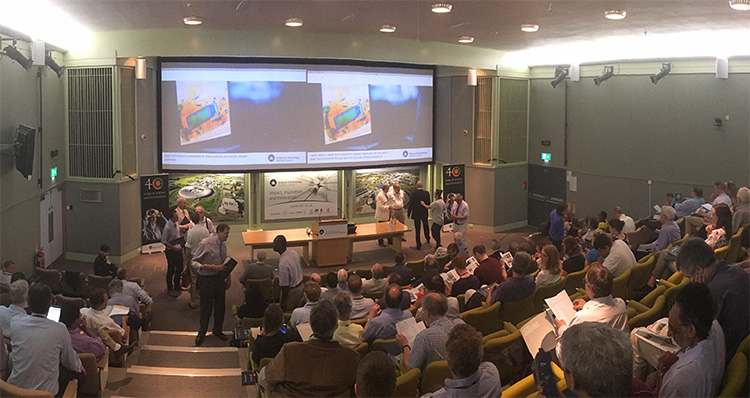
Photo credit STFC
Public Engagement at the CLF is not just limited to the Harwell Campus. Since 2015, the CLF has been running the 'Incredible Power of Light Laser Roadshow', an interactive tour that travels the country providing the opportunity for members of the science-interested public to explore state-of-the-art laser tech. Originally set up to coincide with the International Year of Light in 2015, the roadshow provides a selection of informative displays, hands-on activities, animation and topical science images which help raise awareness of UK laser-based technologies and the central role that lasers play in the modern world. In 2017, the event was based at the Norwich Science Festival between 21st and 29th October.
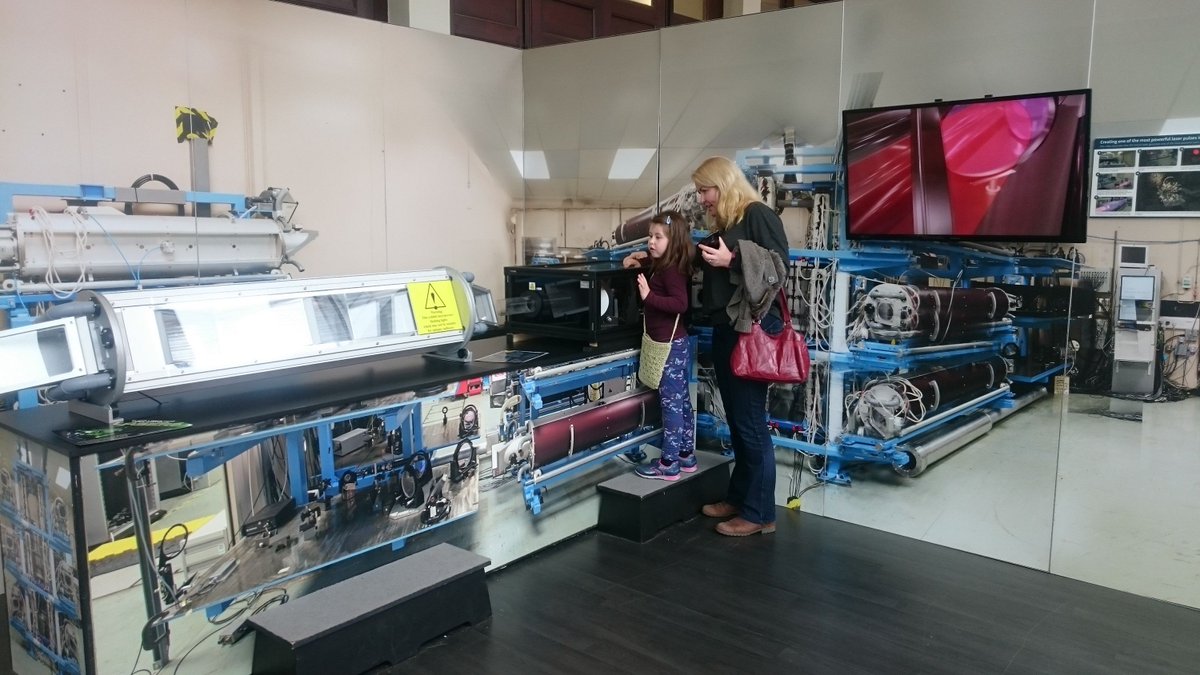
Photo credit STFC
On the 24th October 2017, six million listeners of the BBC Radio 2 Simon Mayo Drivetime show tuned in to hear plasma physicist Dr Ceri Brenner speak about lasers and how we can use them. With a subtle reference to 007's Gold finger, Ceri explained the incredible capabilities of lasers; emphasising their characteristic precision which means that they can be used for a whole host of applications ranging from cosmetics, dentistry and medicine, even down to the blue laser found inside a blue-ray player in the home.

Photo credit STFC
One month later, the physicist and science communicator was invited to speak as part of the 'Talking Science' series of scientific lectures open to the general public, which take place at the Rutherford Appleton Laboratory. During her inspiring talk entitled 'Pressing FIRE on the most powerful laser in the world'; Ceri, who recently won the prestigious Institute of Physics Clifford Paterson Medal and Prize, discussed the plethora of laser applications and the remarkable science behind them. The incredible power of lasers was further demonstrated during a visit from Adam Rutherford, presenter of BBC Radio 4's Inside Science, who got the chance to learn a little more about the CLF and even hear the loud bang of the Gemini laser! Look out for the broadcast on iPlayer.
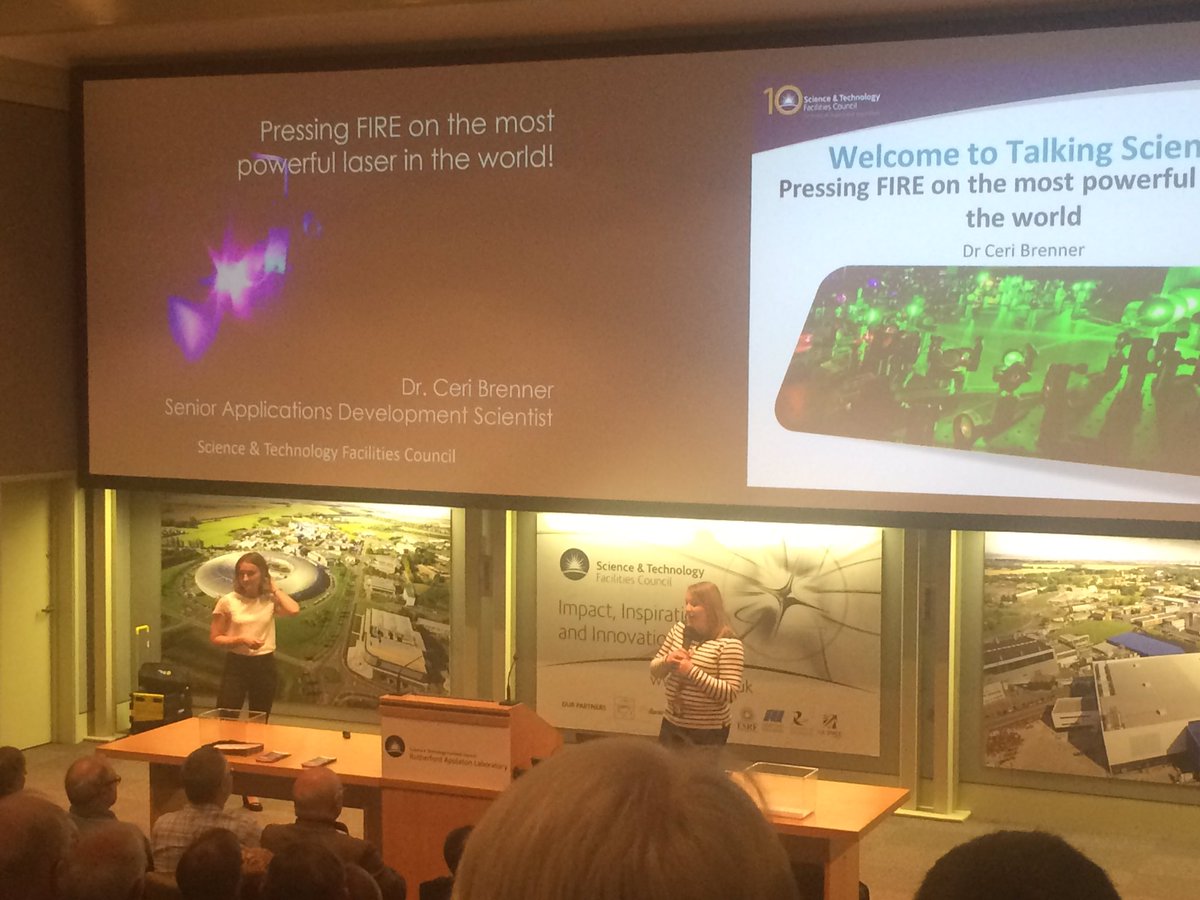
Photo Credit STFC
In September 2017, several representatives from the CLF travelled to the University of Birmingham to attend the INTERACT Physics Outreach Symposium organised by the Science and Technology Facilities Council, the Institute of Physics and the South East Physics Network Outreach. The aim of the event was to 'cultivate a community within the physical sciences of practitioners who develop high quality and creative STEM engagement and encourage a culture of strategic and reflective practise." The day provided the perfect occasion for physical scientists and professional science communicators to come together, network and share their experiences and tips. Having the opportunity to listen to a plenary discussion between Professors Jim Al-Khalili and Alice Roberts was also a bonus!
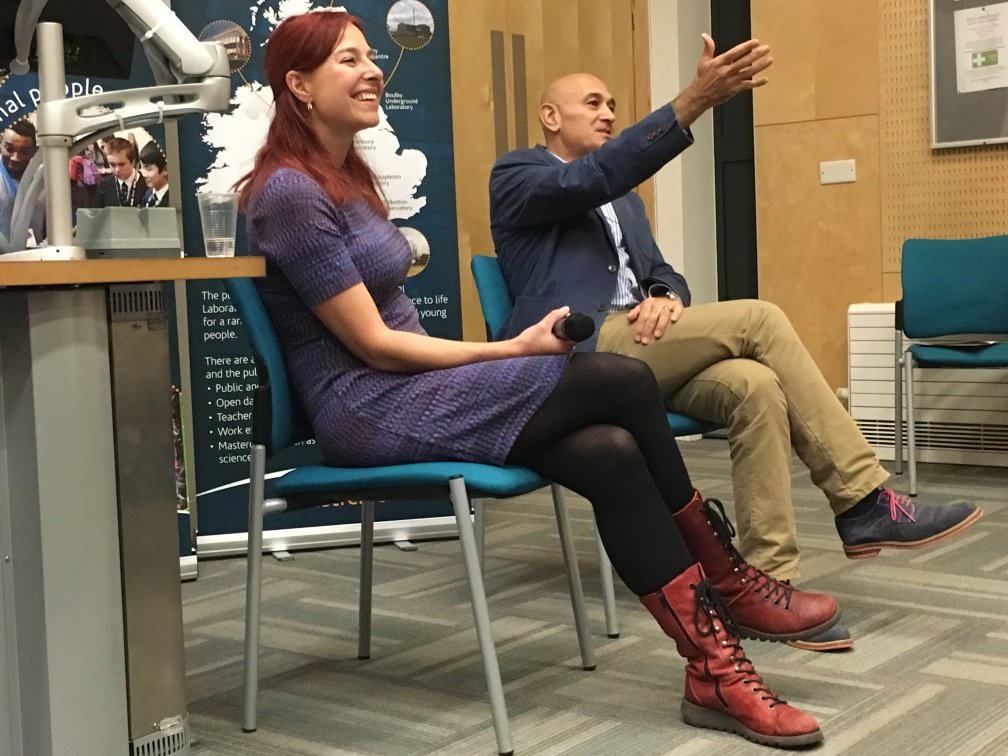
Photo credit @AfRIS_UK
One method that we use to engage with both the users of our facilities and the science-interested general public is through science highlights which we present on our external website. Over the past year we have seen a flurry of articles being posted, reflecting the broad spectrum of research undertaken at the CLF. From investigations into using lasers to generate moderated epithermal neutrons to deepening our knowledge of polarization dependence of bulk ion acceleration, our lasers have facilitated cutting-edge science, with results being published in high-end journals. Tweets referring to these articles have also been widely publicised on the STFC twitter account (@STFC_Matters). Furthermore, the CLF is very proud of its resident artist and engagement officer, Helen Towrie, who is a unique asset to our department, having joined the impact team in February 2017. Helen strives to link science and art together to make research more accessible and appealing to all. Her work provides an incredible platform for members of both our user community and the general public to learn more about our science, whilst adding a splash of colour and aesthetic to our articles.
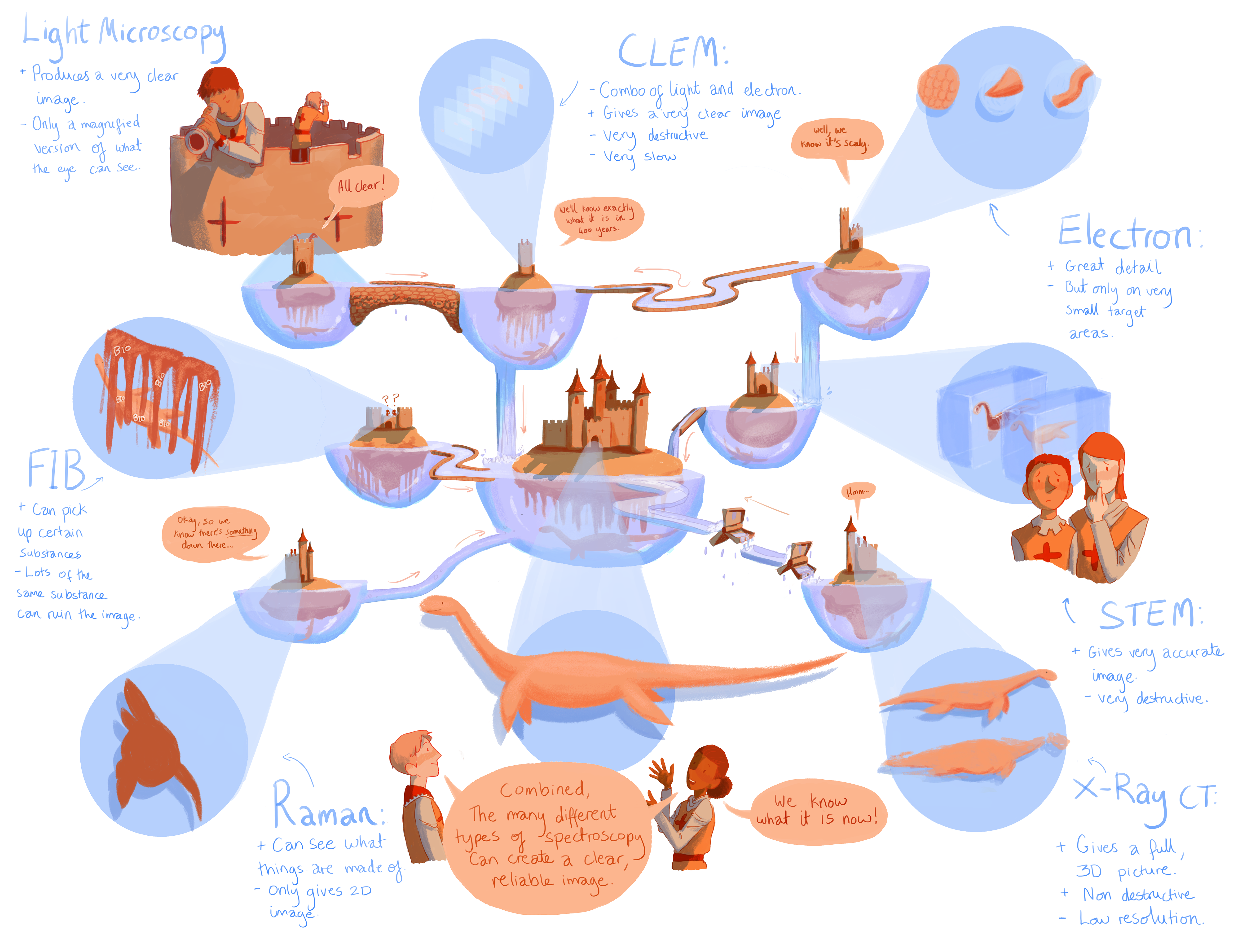
Illustration by Helen Towrie,CLF
The general public is not the only target audience of the CLF. By connecting world-leading research with business, we strive to set the example that strong relations between academia and industrial partners increase the feasibility of tackling some of the greatest challenges of the twenty-first century. By organising the 2017 Industry Focus Day on 'Laser Driven Sources' on the 19th July, Business development manager, Professor Ric Allott, intended to promote the use of technology developed by the CLF and partners to solve critical challenges faced by the industrial sector. This pioneering event brought together 30 representatives from a wide variety of companies including Rolls Royce and TWI to learn about the capabilities of the CLF, highlight industry requirements and discuss solutions to major industrial and societal challenges. The day was so successful that the organisers hope it will pave the way for similar events based at the Harwell Science and Innovation Campus, such as at the ISIS Pulsed Neutron and Muon Source and Diamond Light Source, to be organised in the future.
Looking forward, we hope to expand our social media presence through a variety of different channels, including Twitter and Instagram. As 2018 is the government Year of Engineering, a heavy focus will also be placed upon the value of our engineers who strive to ensure that experiments conducted using our lasers run smoothly and efficiently. Without their time and effort, we would not be able to complete the research that we do.
